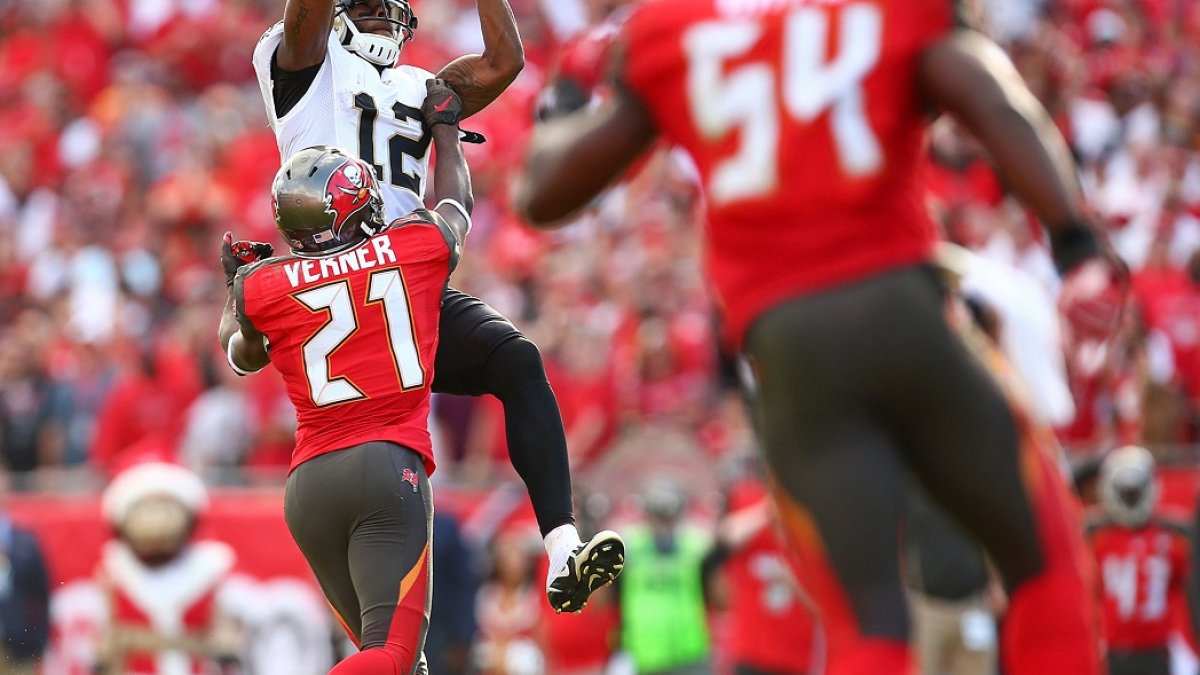The 2017 NFL Draft is just a day away, and we’re about to find out where the new wave of stars will be playing. The PFF Fantasy crew did a pre-draft rookie mock, but there’s no denying that where these players will be playing will dictate a good amount of their fantasy value.
But location isn’t the only factor. Can you get a good sense of how a player will fare in fantasy based solely on when they were drafted?
The narrative: The sooner a player goes in the NFL Draft, the better fantasy player he will be.
Obviously, there are exceptions to the narrative. Tom Brady and Antonio Brown went in the sixth round. Rob Gronkowski and Jimmy Graham were not first-round picks. Neither were David Johnson or Le’Veon Bell.
But generally speaking, the narrative is that the sooner a player is drafted, the better fantasy career they will have. Let’s find out.
The findings
There are only 250-some (give or take) players drafted each year, and only a handful of those players have fantasy relevance (QBs, RBs, WRs, and TEs). So to collect enough data, I went back to the 1993 season (thanks, PFR).
(Subscribe to all our fantasy content, or get everything PFF offers with an All-Access subscription.)
Why 1993? Great question. I thought that was the first year the NFL went to the current seven-round format. It turns out that happened in 1994. But the research doesn’t change — I only examined players drafted Rounds 1-7 anyway.
Note: I broke down player performance over the course of their entire careers, not just their rookie season.
Fantasy points per game by draft round
| Fantasy PPG by Draft Round: 1993-2016 | |||||||
| 1 | 2 | 3 | 4 | 5 | 6 | 7 | |
| QB | 14.6 | 12.2 | 10.6 | 8.3 | 8.8 | 12.1 | 7.7 |
| RB | 10.3 | 7.2 | 6.2 | 5.0 | 3.8 | 3.7 | 3.4 |
| WR | 7.2 | 5.4 | 4.8 | 3.8 | 2.8 | 2.9 | 3.1 |
| TE | 4.6 | 3.0 | 2.8 | 2.1 | 1.5 | 1.8 | 1.0 |
Aside from Tom Brady’s epic career (seriously, he destroys the R-squared of that linear trend line by himself) there’s a clear downward trajectory for a quarterback’s expected fantasy PPG by draft round. First-round quarterbacks have scored 14.6 PPG over the past 24 seasons. Second-rounders have scored 12.2 PPG, while third-rounders have scored 10.6 PPG.
The trend line is even more pronounced for running backs, wideouts, and tight ends. All three see an R-squared of about 0.85 when comparing fantasy PPG to draft round. There’s a roughly 35 percent decrease in expected PPG for a player drafted in Round 1 versus a player drafted in Round 3 for all three positions. (Quarterbacks only see about a 25 percent decrease between Rounds 1 and 3.)
Average games played per player by draft round
| Games Per Player by Draft Round: 1993-2016 | |||||||
| 1 | 2 | 3 | 4 | 5 | 6 | 7 | |
| QB | 81.6 | 56.1 | 28.8 | 25.1 | 12.6 | 18.2 | 14.8 |
| RB | 93.1 | 69.4 | 58.7 | 43.4 | 38.2 | 30.6 | 19.8 |
| WR | 89.3 | 76.1 | 59.1 | 45.7 | 33.5 | 21.8 | 22.5 |
| TE | 131.6 | 87.5 | 70.1 | 63.5 | 53.0 | 43.9 | 33.8 |
We’ve established that players do indeed score more fantasy PPG if they go in a higher round. But what about their opportunity? After all, “opportunity is king” in fantasy.
I took the total number of games played by each position taken in each round, and divided that by the number of players.
Early-round quarterbacks get a ton of opportunity. There’s an almost perfectly linear decrease for quarterbacks taken in Rounds 1-3, and then the decrease slows somewhat for Rounds 4-7. There’s little-to-no difference in expected games for quarterbacks taken between Rounds 5-7.
Running backs and wideouts see an almost perfect linear decrease throughout all seven rounds. The running back chart has an R-squared of 0.95, while wideouts have an R-squared of 0.96.
Tight ends also see a fairly straight line — although tight ends taken in Round 1 typically have longer careers. There’s a clear decrease through all seven rounds, with a tidy R-squared of 0.88.
This chart paints plain the fact that higher draft picks typically get more opportunity.
Fantasy PPG by individual selection
So far, we’ve just clustered players by draft round. But what if you look at production by individual pick selection?
The chart is much messier, but there’s still a downward linear trend line for all four positions. The R-squared for running backs, wideouts, and tight ends is closer to 0.30, while it’s about 0.10 for quarterbacks.
This chart is where you can clearly see the “there are exceptions to the rule” moniker. Tom Brady sticks out on the quarterback chart, Terrell Davis crushes on the running back chart, Marques Colston juts out at the end of the wideout chart, and Jimmy Graham shines on the tight end chart.
Overall, though, there is still correlation between individual draft pick and expected fantasy PPG throughout that players’ career.
The verdict
You can unequivocally expect more out a player the higher they go in the draft.
This research indicates that the round the player goes in is more important than that players’ individual pick number — but there’s correlation there, too.
So go ahead and get excited when a fantasy option you like gets drafted early. The sooner he goes, the more likely he is to be relevant for your fantasy squad.

![ppg-by-round[1796]](https://media.pff.com/2017/04/ppg-by-round1796.gif)
![games-played-by-round[1795]](https://media.pff.com/2017/04/games-played-by-round1795.gif)
![PPG-by-draft-pick[1794]](https://media.pff.com/2017/04/PPG-by-draft-pick1794.gif)


 © 2025 PFF - all rights reserved.
© 2025 PFF - all rights reserved.